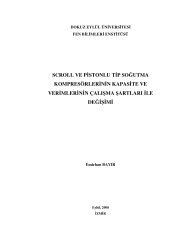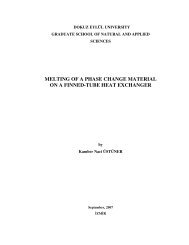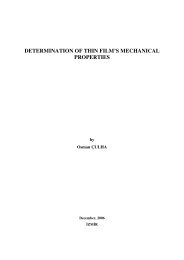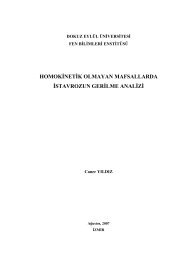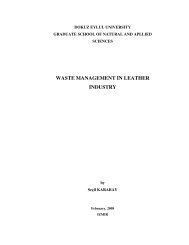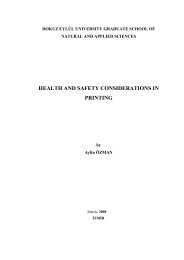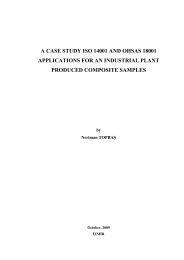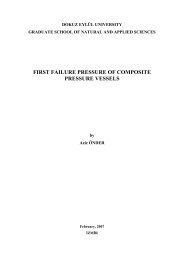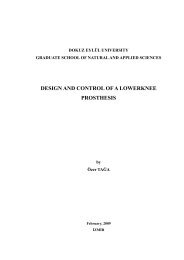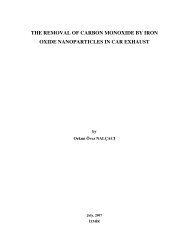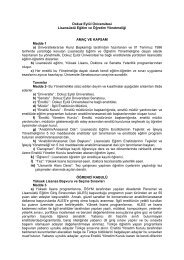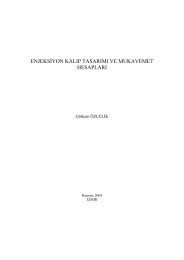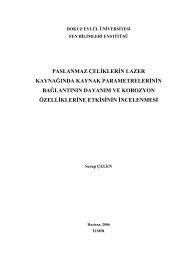DETERMINATION OF THIN FILM'S MECHANICAL PROPERTIES
DETERMINATION OF THIN FILM'S MECHANICAL PROPERTIES
DETERMINATION OF THIN FILM'S MECHANICAL PROPERTIES
Create successful ePaper yourself
Turn your PDF publications into a flip-book with our unique Google optimized e-Paper software.
15<br />
2.9 Heat Treatment after Boriding<br />
Borided parts can be quench hardened in air, oil, and salt bath or polymer<br />
quenchant and subsequently tempered. Heating to the hardening temperature should<br />
be carried out in an oxygen-free protective atmosphere or in a neutral salt bath<br />
(R.Chatterjee-Fischer, 1989)<br />
.<br />
2.10 Boriding of Nonferrous Materials<br />
Nonferrous materials such as nickel, cobalt and molybdenum based alloys as well<br />
as refractory metals and their alloys and cemented carbides can be borided. Copper<br />
cannot: therefore, it provides a good stopping-off material. Of special interest is the<br />
boriding of nickel alloys and titanium and its alloys. Usually, boriding of nickel plate<br />
is done in gaseous BCl 3 -H 2 -Ar mixture in the temperature range of 500 to 1000 o C<br />
(S. Motojima et al, 1981), whereas Permalloy is pack borided with 85% B 4 C and<br />
15% Na 2 CO 3 , or 95 % B 4 C and 5 % Na 2 B 4 O 7 powder mixture at 1000 o C for 6 h in<br />
H 2 atmosphere.<br />
Boriding of titanium and its alloys is carried out preferably between 1000 and<br />
1200 o C. Here pack boriding in oxygen-free amorphous boron in combination with<br />
high vacuum (0.0013 Pa, or 10 –5 torr) and high purity argon atmosphere or gas<br />
boriding with H 2 -BCl 3 -Ar gas mixture is preferred. The microhardness readings of<br />
boride layers formed on titanium and refractory metals are very high compared to<br />
those formed on cobalt and nickel (see Table 2.1). The wear properties of sintered<br />
carbides can be increased by boriding because of the acceptance of boron by soft<br />
cobalt and nickel binders (Lindberg heating treating company, “Boroalloy Process”).<br />
Boride layers formed on tantalum, niobium, tungsten, molybdenum and nickel do<br />
not exhibit tooth-shaped morphology as with titanium. When cemented carbides such<br />
as WC-Co are commercially pack borided with a powder mixture containing 40%<br />
B 4 C, 45% SiC and 5% KBF 4 , three distinct zone are found to be formed in the boride



